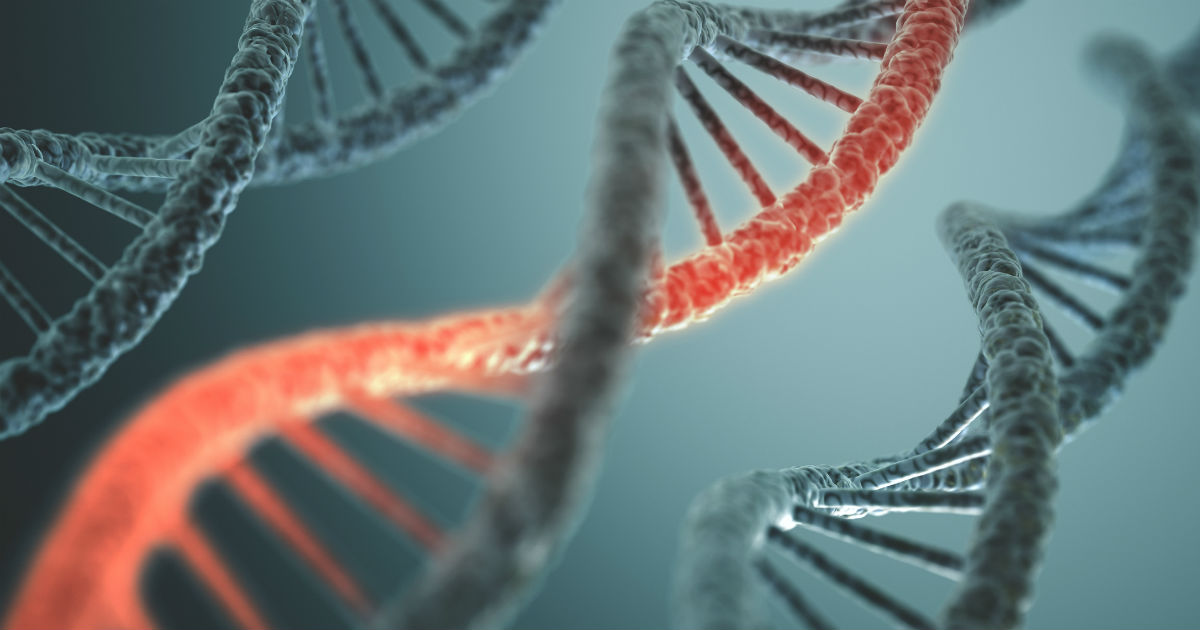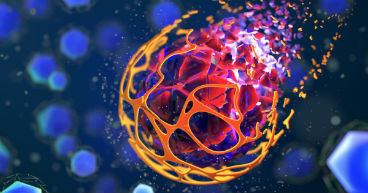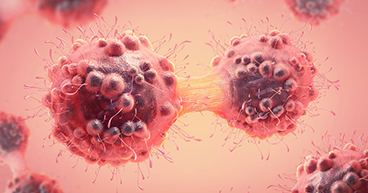
Since the discovery of the DNA double-helix in the 1950s, researchers have studied how mutations in its strands may lead to disease, including cancer. But researchers have come to realize that DNA stored in the nucleus of each cell may not always reveal the whole picture of how cancer cells form. They are also studying the role RNA (ribonucleic acid) plays in cancer growth and treatment.
What is RNA?
If DNA is the queen inside each cell, the many different types of RNA are like genetic worker bees, performing a variety of critical tasks responsible for the function of the body’s tissues and organs. RNA carries portions of DNA sequencing out of the cell nucleus and into the protoplasm, the liquidy contents inside the cell in which much of its living matter resides, where it connects with other RNA and amino acids to produce a variety of proteins. Researchers surmise that even in cells with correct DNA sequencing, the RNA may be making changes that alter which proteins are produced. In cancer patients, these changes may lower levels of proteins that kill cancer cells or increase proteins that prompt a cancer cell to keep dividing.
“It is becoming increasingly clear that unique RNA profiles within individual cancers may play a major role in defining both the biology of the cancer and its response to therapy,” says Maurie Markman, MD, President of Medicine & Science for the Cancer Treatment Centers of America® (CTCA).
Among many challenges in unlocking RNA’s role in cancer is understanding the wide variety of RNA types. The three most widely known RNA types are:
- Messenger RNA (mRNA), which carries genetic coding in the DNA from the nucleus to ribosomes in the cell’s cytoplasm
- Ribosomal RNA (rRNA), which combines with mRNA and specified amino acids to create protein
- Transfer RNA (tRNA), which carries specific amino acids to the ribosomes and links mRNA and rRNA to form a protein
What's the difference? DNA and RNA
| Deoxyribonucleic acid. It is made from the sugar deoxyribose. | Ribonucleic acid. It is made of the sugar ribose. |
| Double stranded and twisted into the classic double-helix shape. It has millions of so-called base pairs made of nucleotides, the molecules that connect the two strands (like rungs on a ladder). |
Made of a single strand and may only have hundreds or thousands of nucleotides that are not paired. |
| Carries the genetic code of a living thing. | Executes the DNA code. Various types of DNA create proteins and deliver messages and instructions to cells. |
| Found in a cell's nucleus. | Found throughout a cell. |
RNA and cancer research
In some cancer patients, the disease may be a result of a malfunctioning RNA strand or different types of RNA acting in combination. An mRNA strand, for instance, may be transporting a truncated version of the proper DNA sequencing, leaving off important material needed for the creation of proteins that prevent tumor growth. Or perhaps a mutation has caused the mRNA and the rRNA to link up at the wrong spot on the nucleotide chain.
One type of RNA drawing interest recently is the large group of non-coding RNA (ncRNA), which includes tRNA and uses portions of DNA that have not been encoded and turned into proteins. Many of these ncRNAs affect how cells react to cancer treatments, disrupting the effectiveness of cancer drugs, according to a report published in the Journal of Hematology & Oncology. The ncRNA may also contribute to cancer metastasis, which occurs when cancer cells travel and form tumors in other parts of the body, the report said.
One version of ncRNA being given a close look is micro RNA (miRNA). Researchers from the University of Michigan, Case Western Reserve University and the University of Pennsylvania have studied the impact of a specific miRNA called miR-181a. The study reviewed 10,000 patients with 38 different cancer types and discovered those with low levels of miR-181a lived several years longer than those with higher levels, the National Cancer Institute reported in June. The study also suggests that miR-181a may help in the development of ovarian cancer, a leading cause of cancer deaths and one whose origins scientists have struggled to understand.
Micro RNAs “are involved in all hallmarks of cancer,” says a 2018 study published by doctors at a government-funded cancer center in Romania. The study reported that miRNA:
- Have displayed limitless ability to replicate
- Are able to activate cancerous growth cells
- Can make cancer cells insensitive to anti-growth signals, including those coming from chemotherapy treatments
- Can create new blood vessels to feed a cancerous tumor, a process called angiogenesis
- Are able to evade immune destruction
- Can promote inflammation and genomic instability
Challenges lay ahead for the continued study of RNA to understand and treat cancer. DNA is an easier research subject because its sugar, deoxyribose, is more stable than the sugar in RNA, ribose. Ribose is susceptible to hydrolysis, the process that breaks down its chemical compounds in reaction to water.
“One of the issues associated with studying RNA is the limited stability of RNA when cells are removed from the patient and die. The RNA present within cells quickly loses its structure so that it is difficult to analyze, in contrast to DNA, which is quite stable,” Dr. Markman says. “However, researchers have increasingly been able to overcome this technical issue, and it is likely clinically relevant advances will be forthcoming in the near future.”
Learn about the gene-editing tool CRISPR and its potential role in cancer treatment.



